A sheriff branded a social worker who was involved closely in the foster family “unprofessional” and “unimpressive” as her evidence lifted the lid on the culture in Moray Council’s social work department.
Under questioning from Simon and Sarah’s lawyer, the council worker admitted there had been mistakes in the way the family was treated but in private remarks, overheard by the court clerk, still appeared to blame the family.
In one of the most damning assessments of the case, Sheriff Olga Pasportnikov said it was a “logical deduction” that Sarah and Simon’s foster daughter had been removed from their care in “revenge” for them raising a complaint about the social work department.
Moray Council’s interim chief social work officer Jim Lyon insists “fostering processes have changed since this matter first came to light”.
What you’re about to read is parts of a social worker’s evidence in court.
The affidavit and the testimony
In preparation for the court case, the girl’s social worker was supposed to write an affidavit to explain her involvement in the case and her professional judgement about Simon and Sarah’s conduct.
The affidavit was supposed to be the social worker’s own words – and she told the court they were.
However, it turned out that a Moray Council lawyer had written most of the affidavit for her.
In fact, large swathes of the written statement were identical to those of the social worker’s colleagues – suggesting evidence of collusion so they could get all their stories straight.
But the story unravelled when the family’s lawyer quizzed the woman on the details and she admitted she didn’t even know who had written her account.
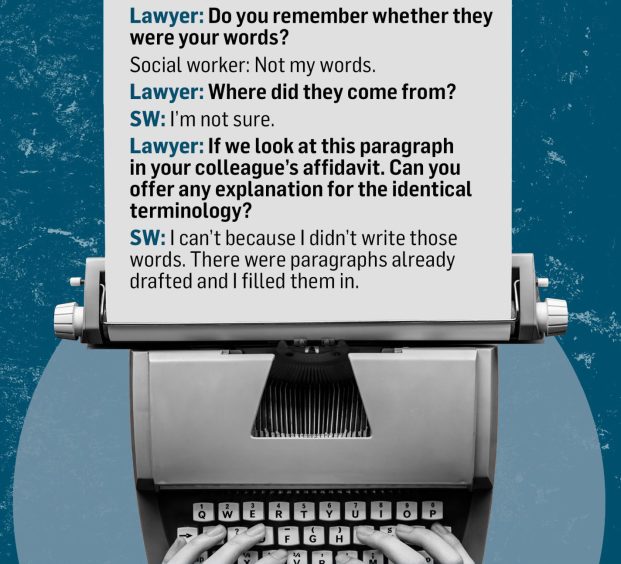
Sexual impropriety allegations
The council accused Simon of receiving a sexual text message from the girl – a teenager – and not reporting it.
But it turned out he HAD reported it and so the allegation that he had done anything wrong was unfounded.
The social worker’s affidavit fell apart under questioning.
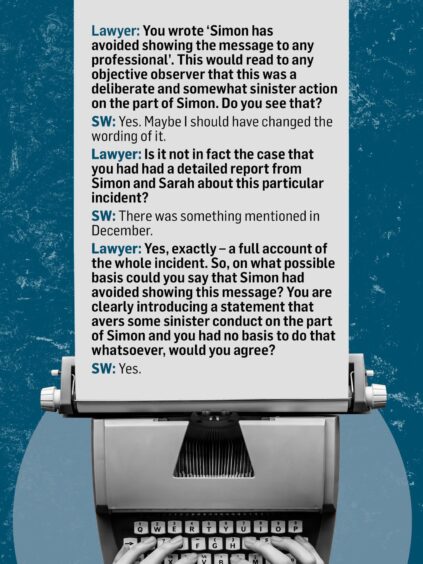
It was heard in court that another safeguarding professional who had seen the message said it was not at all sexual.
Another allegation of impropriety
The girl called Simon at night and asked for a lift – but the social worker took issue with this.
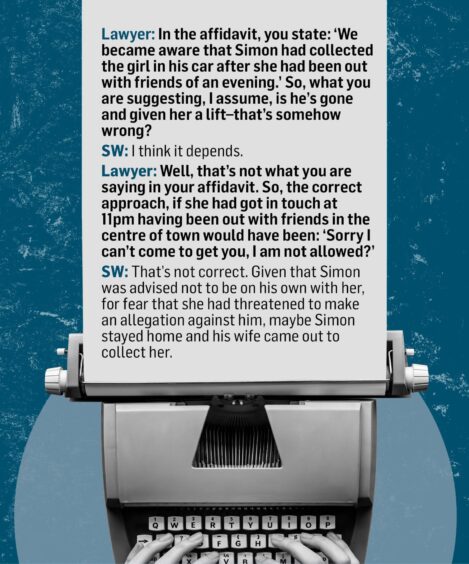
A social worker shouted at the girl
Simon, Sarah and the girl attended a meeting with council workers about the girl’s care.
The law states that the child must be given an opportunity to express a view about their own care – and that was accepted by the council.
But when the girl tried to read a four-page ‘lived experience’ document at the meeting, the council would not let her.
Then things got worse.
According to court records, the girl’s teacher, who was at the meeting, said: “There was no progress. We were going backwards.
“I think that was the same meeting where the girl left in tears.
“She had been shouted at and pointed at by a social worker. It was a disgrace.
“It appeared they had an agenda and, if another professional’s feedback did not feed into that agenda, it was dismissed negatively.”
In court, the lawyer asked the social worker if she agreed with her colleague shouting at the girl.
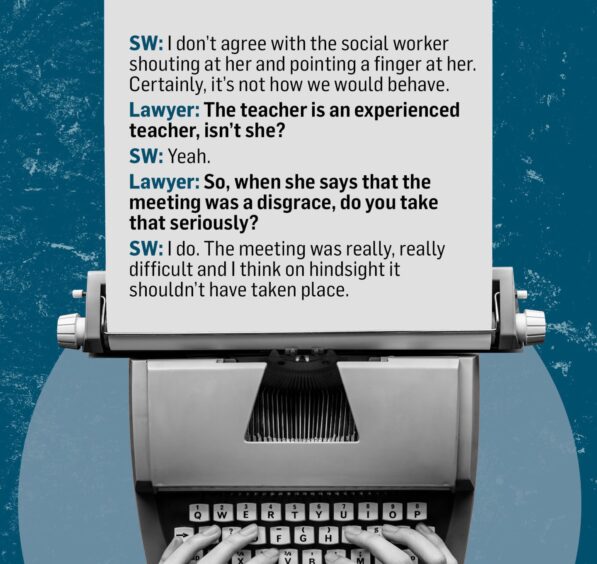
The school problem
In 2017, the girl in Simon and Sarah’s care had to find a new school before the new term.
The social worker tried to get a place – but she was up against the clock.
There were just nine days left before the school holidays – and failure to start discussions before the holidays would mean that there was no time for the council to meet with the headteacher to discuss the girl’s needs in order for her to enrol there.
Despite that, it took the social worker a whole month before she even spoke to a school – at which point the school summer holidays were well under way.
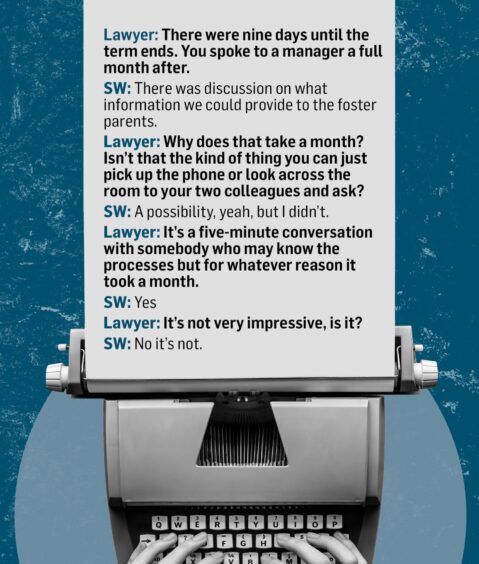
To make matters worse, the social worker had reassured Simon, Sarah and the girl that everything would be okay with the new school
But when it became clear she would not be starting a new school, the social worker did not tell the family – leaving the girl anxious about her future.
Things got so bad that Simon and Sarah took matters into their own hands and arranged a new school themselves.
The complaint
Simon and Sarah complained to Moray Council about their treatment and later complained to the Scottish Public Services Ombudsman.
The council apologised and, a few months later, the SPSO made the council apologise in more detail.
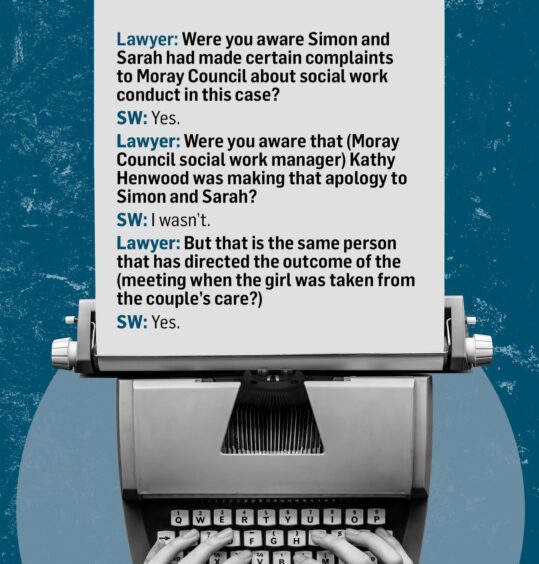
The social worker never bothered to meet her predecessor
When social workers take over cases from their colleagues, it is good practice for them to have a handover meeting.
It gives them both a chance to discuss any particular needs the family has.
In this case, it might have been particularly beneficial because the outgoing social worker had a good relationship with Simon, Sarah and the three children they looked after.
Indeed, there had been no problems in the five years he had been a social worker for the family.
But despite that, the new social worker never bothered to meet with her predecessor – even though he worked just yards away.
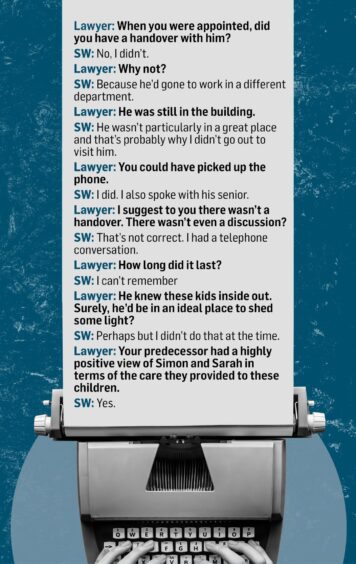
The social worker never met the girl one-to-one
Care guidance states that social workers should meet children on their books on a one-to-one basis regularly.
This is because, in effect, those social workers are a ‘legal parent’ for the children and it is possible they might say things to them in that environment that they would not say in the presence of others.
The social worker accepted and embraced this – and then admitted she had never met with the girl or her brothers alone.
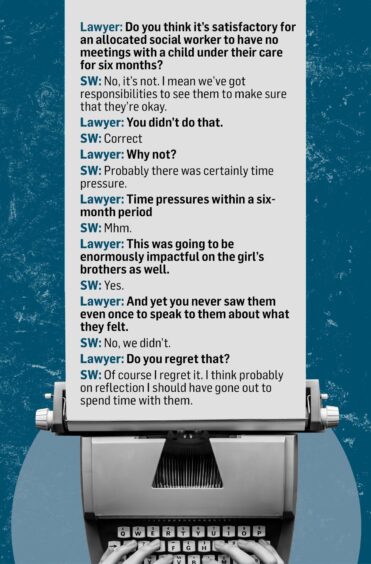
The couple were told to stop keeping diaries
All three children the couple cared for had complex needs and incidents would occasionally happen.
The couple kept a diary of incidents so they could discuss them with professionals later.
But despite Simon and Sarah’s efforts to document incidents – the council told them to stop because they said the diary entries were too harshly worded.
And then it turned out the social worker wasn’t even reading all the diary entries.
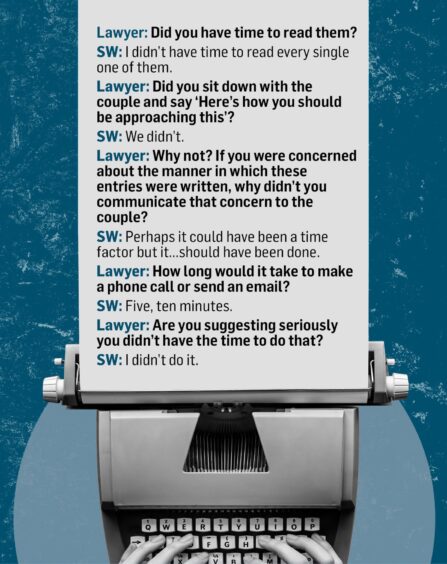
The carers asked for support – but got none
Simon and Sarah asked the council for a package of support and the social worker wrote in one report that the council could not provide such support because it “was not appropriate.”
This was what the social worker referred to in her affidavit.
But the social worker also wrote a separate report which said that the girl and her two brothers might have problems in adulthood unless they get help.
In court, the lawyer questioned why there was a difference between that and the affidavit.
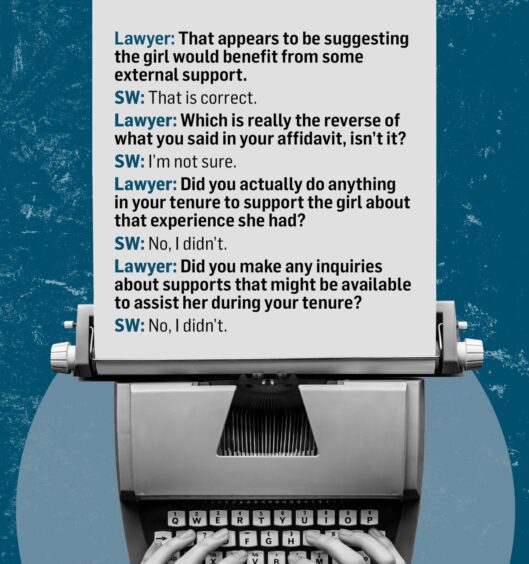
The girl’s ‘temporary’ placement was really a permanent one
Simon and Sarah agreed the girl should go into a specialist centre so they could have a break and resolve issues with the council and get better support for her.
This was agreed in the autumn of 2017 and the couple were able to keep visiting the girl and she still referred to them as ‘mum and dad’.
It was the couple and the girl’s belief at that point that she would eventually return to the family home permanently.
But the council planned for it to be a permanent placement all along.
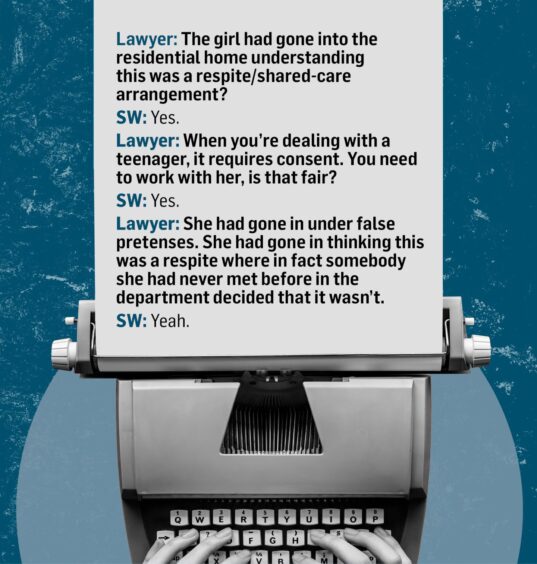
Five months to write a simple document
A crucial meeting took place to discuss the girl’s care and the written record was important to ensure the girl was looked after.
After such conferences, it is important that there is a record of what was discussed, so all parties can go away with full knowledge of what the agreed action points were.
And then, if they are not acted upon, the family are able to follow up and ask why.
But it took the council almost half a year to produce the minutes.
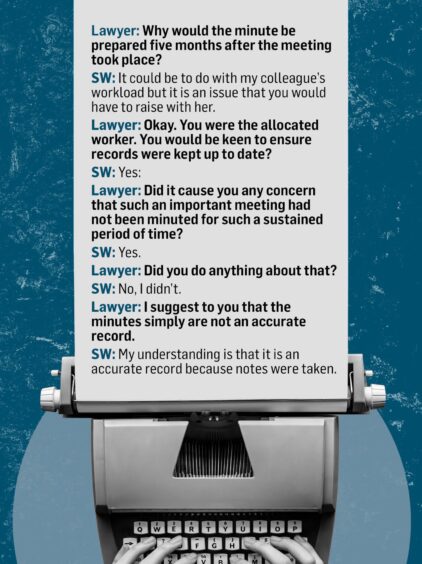
A boss handled the carer’s complaint – then took the girl from them
Simon and Sarah were so upset by the way the council handled the case that they made a formal complaint to Moray Council in October 2017.
In November 2017, service manager Kathy Henwood replied to say she had investigated.
The council upheld the family’s complaint in December 2017.
Then, in January 2018, Kathy Henwood decided the girl should be taken from their care.
This decision was supposed to be made by an independent reporting officer (IRO) at a looked-after children review meeting.
But the court heard how Kathy Henwood had arranged a “clandestine” meeting with the IRO the day before and directed the IRO to take the girl from the couple.
Simon and Sarah said they believed this was “revenge” for their complaint – and Sheriff Olga Pasportnikov said that was “a logical deduction”.
Even during the appeal hearing, the appeal sheriff said: “The sheriff concluded (this happened) because of the complaint made by Simon and Sarah.
“That is a conclusion the sheriff was entitled to reach on the evidence.”
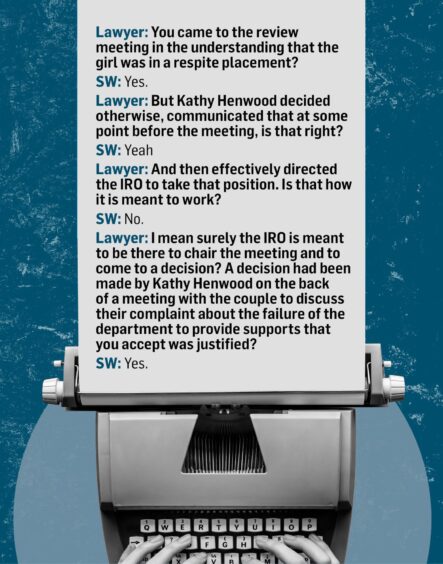
Social worker ‘behaved in an unprofessional manner’
After giving evidence for two days and having her story severely grilled by lawyers, the social worker should have perhaps been apologetic.
Instead, she was overheard by the court clerk criticising Simon and Sarah.
Sheriff Pasportnikov referenced this incident in her ruling.
The sheriff wrote: “The social worker did not present as an impressive witness.
“In the course of her evidence, she behaved in an unprofessional manner. At one stage, during a break in her evidence, she was overheard blaming Simon and Sarah for continuing with these proceedings.”
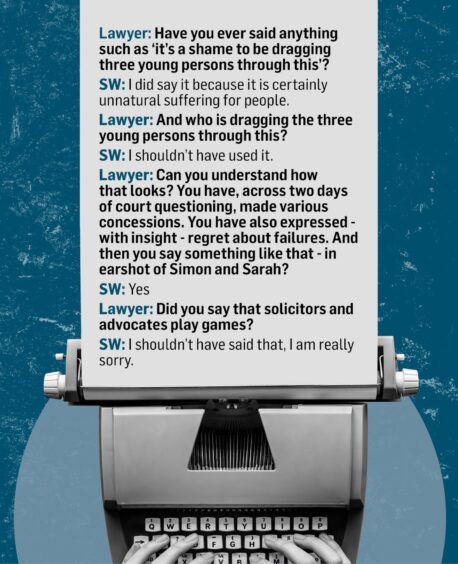
A Moray Council spokeswoman said: “Giving evidence in court can be stressful for witnesses and the council is committed to ensuring appropriate support and guidance for its members who may have to present evidence in court.”
